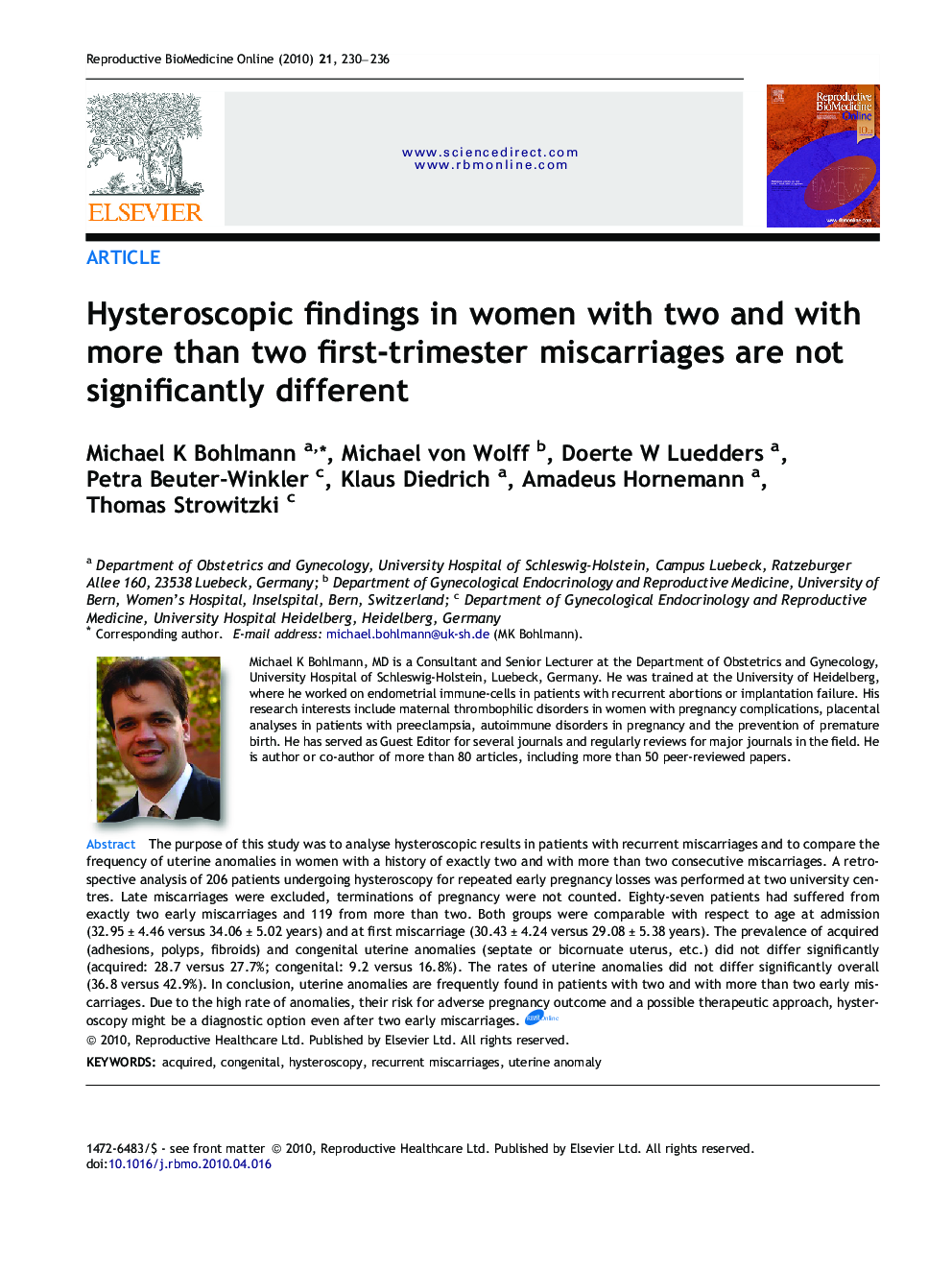| کد مقاله | کد نشریه | سال انتشار | مقاله انگلیسی | نسخه تمام متن |
|---|---|---|---|---|
| 3971755 | 1256777 | 2010 | 7 صفحه PDF | دانلود رایگان |

The purpose of this study was to analyse hysteroscopic results in patients with recurrent miscarriages and to compare the frequency of uterine anomalies in women with a history of exactly two and with more than two consecutive miscarriages. A retrospective analysis of 206 patients undergoing hysteroscopy for repeated early pregnancy losses was performed at two university centres. Late miscarriages were excluded, terminations of pregnancy were not counted. Eighty-seven patients had suffered from exactly two early miscarriages and 119 from more than two. Both groups were comparable with respect to age at admission (32.95 ± 4.46 versus 34.06 ± 5.02 years) and at first miscarriage (30.43 ± 4.24 versus 29.08 ± 5.38 years). The prevalence of acquired (adhesions, polyps, fibroids) and congenital uterine anomalies (septate or bicornuate uterus, etc.) did not differ significantly (acquired: 28.7 versus 27.7%; congenital: 9.2 versus 16.8%). The rates of uterine anomalies did not differ significantly overall (36.8 versus 42.9%). In conclusion, uterine anomalies are frequently found in patients with two and with more than two early miscarriages. Due to the high rate of anomalies, their risk for adverse pregnancy outcome and a possible therapeutic approach, hysteroscopy might be a diagnostic option even after two early miscarriages.
Journal: Reproductive BioMedicine Online - Volume 21, Issue 2, August 2010, Pages 230–236